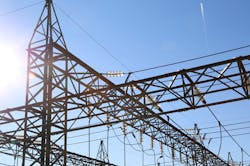Almost everyone involved with the electric utility industry sees a future power system that is increasingly flexible, more intelligent, more reliable and greener. Many of us believe the path forward involves increasing the digitalization and automation of the grid while perfecting the oftentimes fledgling convergence of utility information and operational systems. The benefits of what we now call the smart grid revolution include reliability, operational efficiency, cost reduction, resilience, customer centricity and the list goes on. So, should our industry proceed full-speed ahead with this now decade-long endeavor or should we take a periodic pause to stop, look and listen as we tell our kids in times of uncertainty?
The technology revolution in the power T&D sector has been coincident with changes in federal law, state regulatory movements and a growing need to replace aging infrastructure. One key driver has been to change our relatively fragmented grid to a national interconnected system that can better accommodate bulk transfers of electrical energy on a regional scale. Another driver has been grid modernization with digital communications technology, information systems and automation to detect and react to local changes. The added technologies improve system operating efficiency, increase reliability as well as resiliency and lower operating costs, all while improving customer service. Finally, this technology revolution is facilitating or at least coincident with a growing demand from stakeholders for more opportunities for grid-connected renewable and distributed energy sources and greater adaptability to current and future consumer-oriented applications.
Despite significant benefits and advancements, the smart grid revolution has admittedly come at a significant cost. According to Statista (https://www.statista.com/statistics/499709/smart-grid-expenditures-in-the-united-states-by-segment/), spending on smart grid projects in the U.S. has averaged around $3.5 billion per year from 2009 through 2016. Market Research Market predicts the U.S. smart grid market will grow from the present spending level of approximately $4.7 billion to $26.7 billion over the next five years Along with these significant spending forecasts comes some signs of discontent.
After years of investment and upgrades across the country completed in response to major storms, infrastructure end of life necessity and evolving customer expectations, some stakeholders are beginning to ask whether the optimal smart grid investments are being pursued. One argument is that smart grid investments are not optimized if they were not selected using a detailed investigational proceeding like a utility commission proceeding with public input. Another is that smart grid investments must be validated by measurement and oversight to be sure customers are getting maximum economic benefits for their rates. For some stakeholders, smart grid investment plans will not be optimal unless their particular desired outcome is achieved. This may be a certain level of improved service or it may be environmental outcomes or increased business opportunities.
One organization, GridWise, suggests arriving at a no regrets gird modernization plan which includes the cost effective implementation of the most important capabilities on the most appropriate geographic scale in a manner which optimizes the economic benefits, accommodates customer choices and yields the greatest return on investment for consumers and the environment. Easy peasy, right? No far from it, but there may be some steps utilities can take to minimize post investment criticism.
Major grid modernization investments will likely be part of a regulatory proceeding. While a dedicated proceeding with public input may not be possible or desired, utility planners should document their investment plans just as if they were to be the principal focus of the proceeding. Details regarding option selection and exclusion should be as objective as possible and, whenever feasible, supported by customer surveys. To the greatest extent achievable, major system upgrades or changes should be preceded with pilot programs and appropriate measures selected to quantify operational outcomes such as SAIDI, cost and timelines. A plan should be offered upfront to identify and resolve the source of any program shortcomings. The investment plan should contain a thoroughly peer reviewed benefit-cost study to support the system improvements selected. Hot issues for most any program include the distribution of economic and technology risks as well as the amount of optionality the plan creates for customers.
In today’s frenetically changing electric utility environment, it’s almost impossible to satisfy all customers all of the time. Customer preferences and expectations are constantly evolving. However, so too is the level of service possible with smart grid technology innovations. Well-documented grid planning, thoughtful utility investments and on-going performance, plus customer satisfaction response assessment, can help utilities ensure their smart grid investments are true to their name. It may not be practical or in anyone’s best interest to stop grid modernization even for a short period of time, but we can proceed carefully as many utilities are doing to ensure the interests of all stakeholders are considered.
About the Author
David Shadle
Grid Optimization Editor
Dave joined the T&D World team as the editor of the Grid Optimization Center of Excellence website in January 2016.
Dave is a power industry veteran with a history of leading environmental and development organizations, championing crucial projects, managing major acquisitions and implementing change. Dave is currently a principal at Power Advance, LLC, an independent consulting firm specializing in power project development, research and analysis, due diligence and valuation support. Dave is also a contributing consultant for Transmission & Distribution World. Prior to Power Advance, Dave held business and power project development positions with The Louis Berger Group, Iberdrola Renewables, FPL Energy and General Public Utilities. He is a graduate of Pennsylvania State University, the New Jersey Institute of Technology and Purdue University.
